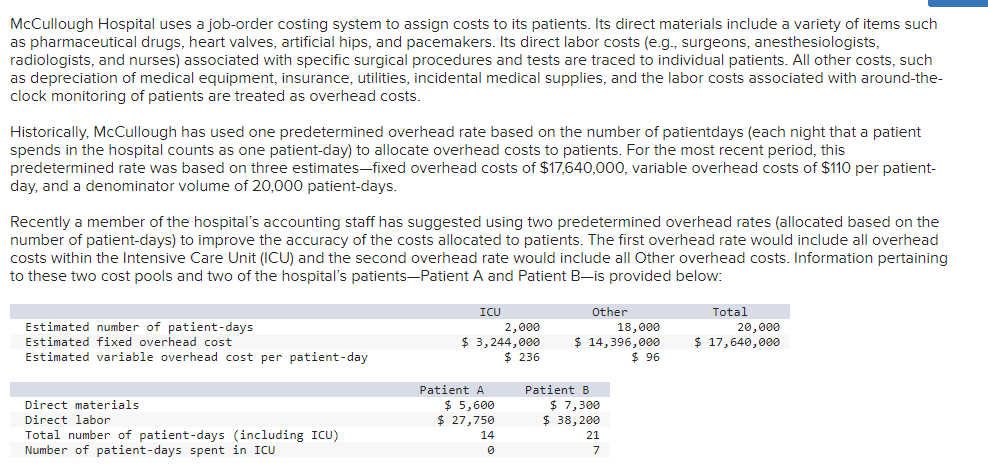

McCullough Hospital uses a job-order costing system to assign costs to its patients. Its direct materials include a variety of items such as pharmaceutical drugs, heart valves, artificial hips, and pacemakers. Its direct labor costs (e.g., surgeons, anesthesiologists, radiologists, and nurses) associated with specific surgical procedures and tests are traced to individual patients. All other costs, such as depreciation of medical equipment, insurance, utilities, incidental medical supplies, and the labor costs associated with around-theclock monitoring of patients are treated as overhead costs. Historically, McCullough has used one predetermined overhead rate based on the number of patientdays (each night that a patient spends in the hospital counts as one patient-day) to allocate overhead costs to patients. For the most recent period, this predetermined rate was based on three estimates-fixed overhead costs of $17,640,000, variable overhead costs of $110 per patientday, and a denominator volume of 20,000 patient-days. Recently a member of the hospital's accounting staff has suggested using two predetermined overhead rates (allocated based on the number of patient-days) to improve the accuracy of the costs allocated to patients. The first overhead rate would include all overhead costs within the Intensive Care Unit (ICU) and the second overhead rate would include all Other overhead costs. Information pertaining to these two cost pools and two of the hospital's patients-Patient A and Patient B-is provided below: Hints: Part 1a: In the numerator of your POHR, make sure to include each department's fixed overhead and each department's variable overhead (you will have to calculate each department's total variable overhead). (See the video solution for Example 2-3,_part a to walk through this type of calculation.) Part 2a: Make sure to include each department's variable and fixed overhead in your calculation. (See the video solution for Example 2-3,_part d to walk through this type of calculation.) Part 2b: Make sure to keep in mind that the table lists 'total patient days (including ICU days)' and 'ICU' days for each patient. So you need to subtract the ICU days from the total days to get each patient's non-ICU days when assigning overhead for 'other' activities








